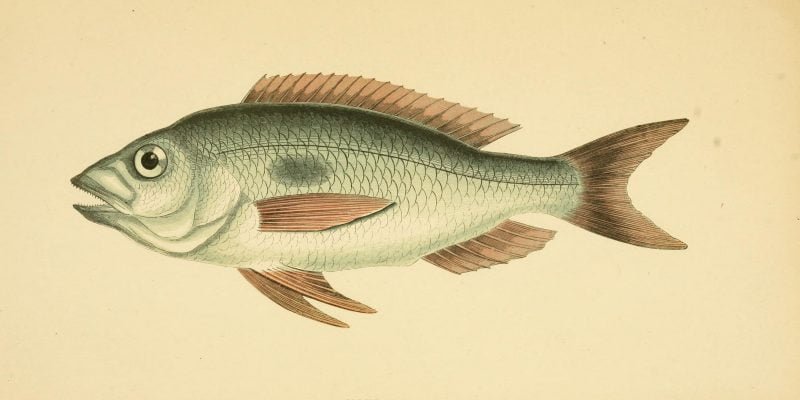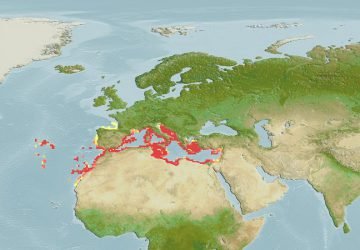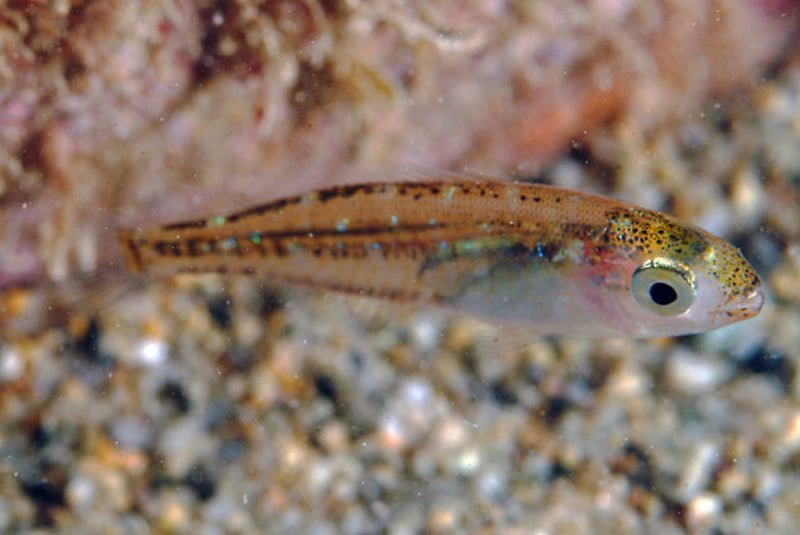Centhracantus Cirrus
– Curled Picarel –

| Conservation status |
|---|
 Least Concern (IUCN 3.1) |
| Scientific classification |
Centracanthus cirrus
Rafinesque, 1810
| Kingdom: | Animalia |
| Phylum: | Chordata |
| Class: | Actinopterygii |
| Order: | Perciformes |
| Family: | Sparidae |
| Genus: | Centracanthus |
| Species: | C. cirrus |


Centracanthus cirrus, also known as the curled picarel, is a species of picarel native to the eastern Atlantic Ocean and the Mediterranean Sea. It has been found at depths down to 1,000 metres (3,300 ft).[1] This species grows to a length of 34 centimetres (13 in) TL though usually not exceeding 12 centimetres (4.7 in). This species is of minor importance to local commercial fisheries. This species is the only known member of its genus.[2]
Description
The body, on average 10 cm long (maximum of 20 cm) [2] , is much more elongated than the other representatives of the family and has an extraordinarily extensible snout which allows it to capture its prey. The color is silver gray with pinkish reflections without the dark spot on the sides that characterizes the other Centracantides. The dorsal fin , composed of 13 soft rays and 9-10 hard rays [2] , has a characteristic central indentation that is clearly visible even in the smallest specimens, absolutely diagnostic. The color is light brown, reddish reflections are present on the belly, darker in the back. [2]
Distribution and Habitat
It is widespread in the eastern Atlantic Ocean as far north as Portugal and in the Mediterranean Sea where it is more common in the south-western part and in the Tyrrhenian Sea [2] . It lives in shoals in open water, near hard bottoms, often rich in vegetation, from about 20-30 meters up to about 200 meters of depth. It makes extensive migrations throughout the year but its routes are completely unknown. It is not a common species, especially in coastal waters.
Alimentation
It feeds mainly on Penaeidae crustaceans .
Biology
Reproduction
It takes place between August and September. The details, like many other biological aspects of this species, are unknown.
Behavior
Lives in packs. [2]
Coupling
It only happens for a few days and the male dances to attract the females who swim above them.
Fishing
It has good nutritional values and decent meats. [2]


































































































































































































































































































































































